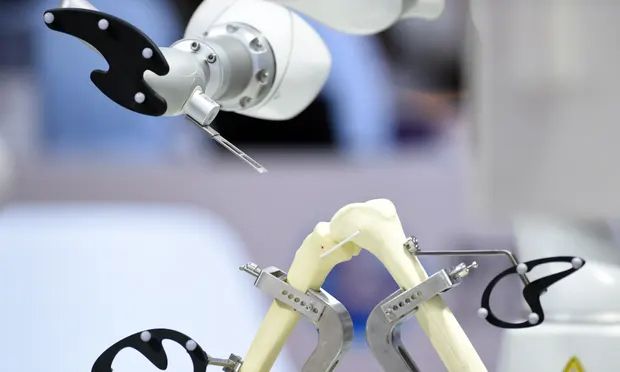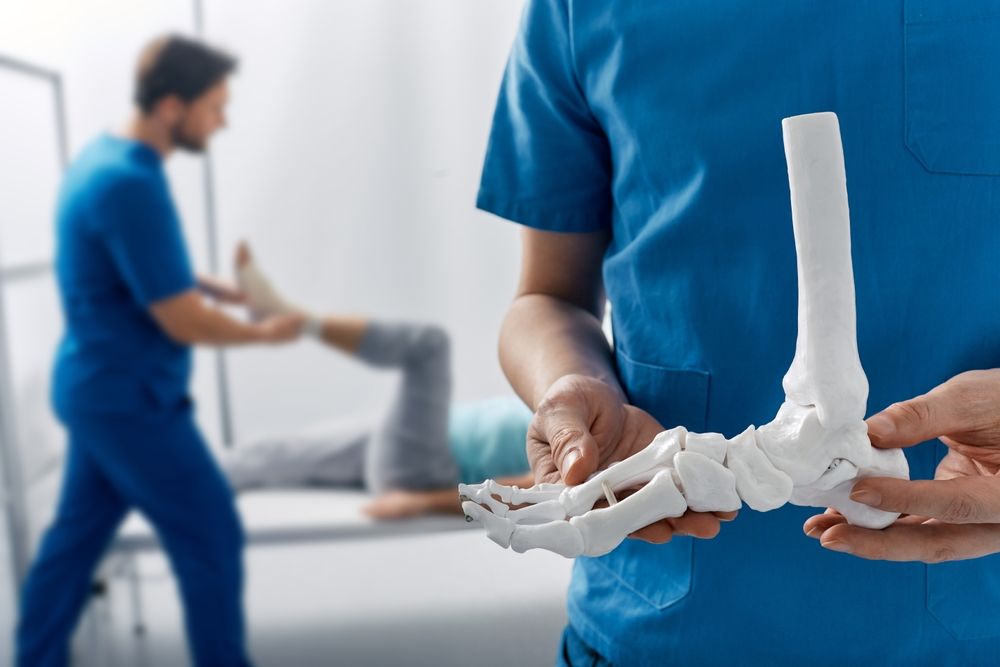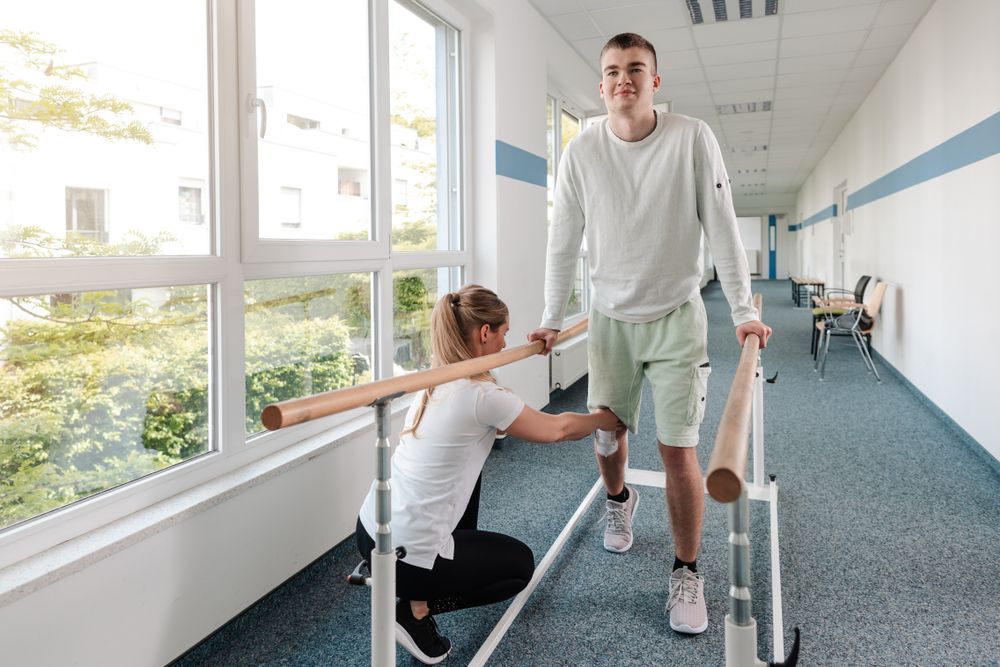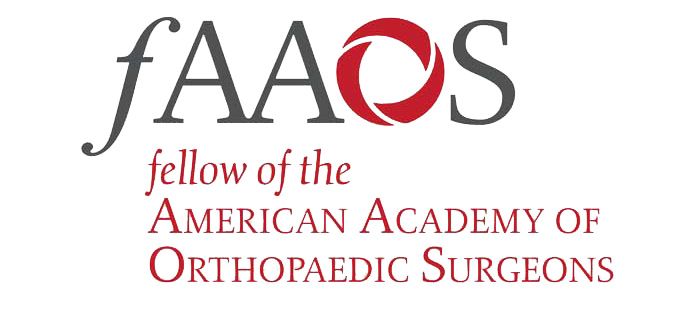Published Oct 2, 2022 in theguardian.com
Author: Ranjana Srivastava
Australian Orthopaedic Association guidelines specifically advise surgeons not to claim the clinical outcomes of robotic surgery are superior to the standard procedure.
“Just so you know, money is not an issue. Should I have the better robotic knee or settle for the regular operation?”
So said my friend’s mother when she could no longer hike – and her words made my ears prick for two reasons. I had never heard the first assertion in my modest Indian upbringing where value for money ruled. But more importantly, my own mother, of a similar age, was scheduled for a knee replacement and her surgeon hadn’t even mentioned a robot.
My friend’s mother sent me a curated list of websites that touted the benefits of robotic joint replacement – a new technology with purportedly better outcomes. Some websites contained glowing patient testimonials and others hailed the surgeon’s expertise as second to none, accompanied by mildly awe-inspiring illustrations of how robots worked and exhortations to book a consultation now. I felt guilty at consigning my mother to less.
In searching for a surgeon, I assumed that more than 15 years of training meant that all Australian orthopaedic surgeons were technically sound. Therefore, the choice depended on the right fit and I did what any experienced doctor would do: I asked the nurses. Doctors seldom see how their colleagues interact with patients. Nurses, on the other hand, observe the nitty gritty of doctors’ behaviours.
My mother, for whom English is a second language, needed a surgeon who was quiet, steady and undramatic. I watched how quickly “they are all good” narrowed to “but here is my pick”.
The surgeon was so affable that it didn’t feel criminal to ask why he wasn’t equipping himself with a robotic arm to help my mother. He explained that while he knew how to, he chose not to use a robot because it did not deliver better outcomes compared with conventional surgery. In fact, the evidence suggested that robotic joint surgery required a longer anaesthetic with its attendant complications and more consumables creating greater environmental waste. The recovery was not faster, and it was unclear whether more accurate prosthetic placement translated into better patient outcomes such as reduced pain, better mobility, or longer implant life.
In other words, joint surgery had a dramatic impact on quality of life, but this was attributable to the surgery rather than the robot. Robots had the potential to transform the patient experience, but not yet. When I asked about the enthusiastic advertising of robotic surgery by surgeons and hospitals, he mentioned the commercial incentive to promote a technology that cost a cool million dollars apiece. My mother went on to have the “regular” surgery not once but twice.
I recalled that conversation when I came upon an Australian study which found that many orthopaedic surgeons do not comply with advertising guidelines set out by their own professional association, the Australian Orthopaedic Association (AOA) or Ahpra (Australian Health Practitioner Regulation Agency).
It is a crime under Australia law to promote a regulated health service in a manner that could improperly influence healthcare choices and Ahpra has published guidelines to protect patients from false or misleading claims and facilitate informed healthcare choices. The AOA advises surgeons to make no claim to superior performance, not conflate anecdotal experience with validated evidence, not lay claim to “excellence by assertion” and not signal that the newest technology or the earliest adopter was necessarily the best.
Since direct-to-consumer advertising influences patients by shaping their perception of what’s “best” and prompts demand that fuels healthcare spending, the researchers wanted to determine surgeons’ adherence to professional guidelines.
The results were sobering.
Of 81 randomly selected AOA surgeons, 65% were non-compliant with at least one aspect of the guidelines. Of the 59 surgeons in a second sample obtained via a Google search that included paid advertisements and sponsored results, 81% were non-compliant. Non-compliant surgeons made unverified claims of reputation and skill, misrepresented treatment benefit and did not specify industry ties. The information on their website was of low quality, exaggerated and subjective.
In view of an ageing population facing increasing rates of joint replacement and the prevailing low health literacy coupled with web-surfing guised as online “research”, these findings are in the public interest.
I have been reflecting on two aspects. One is the rather awkward matter of a doctor claiming to be “the best”, as if there were a metric for it.
As an oncologist in sustained relationships with patients, I am gratified to hear a spontaneous “you’re amazing!” or “you saved my life”. Such heartfelt words are like salve to the soul but appropriate them for an advertorial? Only with the simultaneous confession that a long career holds a fair few disappointed patients who are closer to filing a complaint than finding one’s care amazing. As one website explains, the best surgeon is the one who gets along with the patient. While it requires a healthy ego (and a lot of training) to scale the heights of a profession, a dose of humility is never misplaced.
A second issue is integrity. The AOA guidelines specifically advise surgeons not to claim that the clinical outcomes of robotic surgery are superior to the standard procedure but 14% of surgeons in one sample and 29% in the second sample breached this advice. They sully the reputation of the quarter of surgeons in the first sample and 12% in the second sample who were fully compliant with both sets of guidelines and many others not included in the study who do the right thing.
Surgeons occupy a hallowed place in the medical hierarchy and there is a striking power imbalance between them and their patients. Therefore, surgeons have an enormous duty of care to uphold the highest professional standards.
The authors generously allow that the non-compliant surgeons simply don’t understand the guidelines, but I suspect that the public will agree with their alternative hypothesis that guidelines are violated for commercial gain. If so, it’s time for the profession and authorities to act because when an expensive and not-fully-proven healthcare intervention enters the market, we all pay the price.
Decrying the hype, a surgeon recently quipped that robotic joint surgery was “not a penicillin moment” in orthopaedics. He had me thinking that this could be the new catchphrase appended to all the advertisements that run afoul of professional standards.
Ranjana Srivastava is an Australian oncologist, award-winning author and Fulbright scholar











